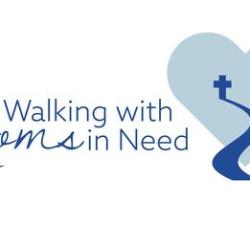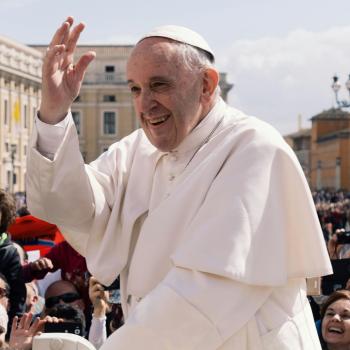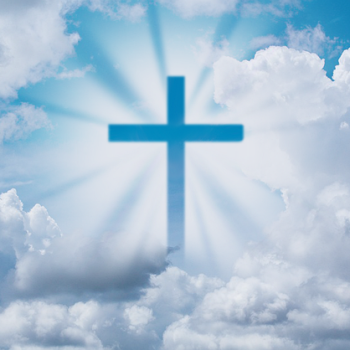Kneeling during a Catholic Mass has always seemed to me to be an important act of worship. I always wondered why Protestants didn’t kneel, and after researching the question, I am more convinced that kneeling is a needed act of humility.
History of Kneeling in Church
There is actually a lot of history, and perhaps myth, behind the practice of kneeling. For starters, there are 23 references to kneeling in the Bible. The instances all deal with respect, worship, supplication or penance.
Vatican II eliminated some of the kneeling in church. The reason given was that kneeling during Mass was something that started around the 7th century in reflection of the subservience given to feudal lords that should then also be given to the Lord God.
That may not have been the real reason. Coincidental, perhaps, to feudal subservience was the belief among Catholic theologians of the time that kneeling was appropriate at points in the Mass when the divine Christ is present.
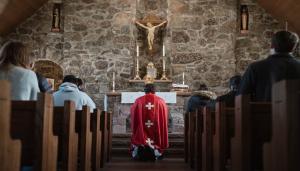
After Vatican II, it was felt that modern Catholics should not kneel like peons but stand to express their equality as brothers and sisters of the human Christ, all made in the image and likeness of God. Standing also emphasized that we concelebrate the Mass with the priest.
The thinking was that standing would be a return to the practices of the early Church, which was a continuation of the Jewish practice of standing while praying. The Old Testament references to kneeling were considered extreme cases of supplication or penitence, yet Daniel prayed on his knees three times a day (Daniel 6:10).
Protestant View
So Vatican II sent us closer to the Protestant interpretation of what is appropriate in a service, that is, more individual responsibility and elevated humanity. However, for the Protestants, there was more involved in the change away from kneeling.
The Reformation was also a great rebellion against anything Catholic, so eliminating kneeling was a way to reject a Catholic practice. There are still some Protestant churches that have instances of kneeling, but it is limited.
Criticism of kneeling contends that it is a sign of penitence or supplication not appropriate for the celebration that is a church service. If you want to be positive and rejoice, you don’t fall down on your knees like a beggar or a cowed sinner.
While I understand what they are saying about a celebration, I believe that if we are going to a “worship service” we should worship, that is, give adoration to God in a respectful manner. How can we say “Jesus, I adore You” if standing at equal height, so to speak?
As St. Paul wrote in Philippians 2:10: At the name of Jesus, every knee should bend.” In fact, according to St. Luke, as a human praying to God, Jesus knelt (22:41): “And He withdrew from them about a stone’s throw and knelt down and prayed.”
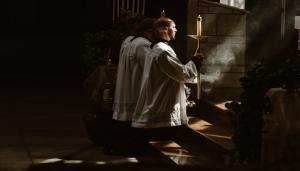 Purposes of Kneeling
Purposes of Kneeling
We too are often supplicants in our prayers, so isn’t it appropriate to kneel while praying as a sign of humble submission? Psalm 95:6 entreats us: “Oh come, let us worship and bow down; let us kneel before the Lord, our Maker!”
Kneeling represents a form of penance too, and not just of the spiritual kind, as any of us with decrepit knees can tell you. There are some poorly padded or even wooden kneelers that can leave you in literal pain.
Our (my husband and I) favorite church is an historic one with pews and kneelers that were made for a smaller people in the 19th century. There, kneeling can involve a bit of contortion, but we don’t make excuses and beg off—not in front of Christ on the cross!
To me, the most important purpose of kneeling is as an act of humility, a virtue that seems in short supply today. Demonstrating awe in the presence of God is a reminder of our place and mission in the world.
Further, kneeling isn’t necessarily subservience; it is homage. After all, we are not equal to God and should look up to Him. Isn’t that the term that the Magi used—”We have come to pay Him homage”?
It seems odd to me that Queen Elizabeth II would kneel to say her bedtime prayers, but not kneel in church. Some Catholics kneel to pray the rosary but think we should stand throughout Mass. If kneeling is appropriate to other prayer, isn’t it imperative for Mass?
Kneeling is undoubtedly an act of adoration, and that’s why we go to church—to adore. Kneeling, including genuflecting, acknowledges that God is real and present in the tabernacle, deserving of our humble sign of respect.



